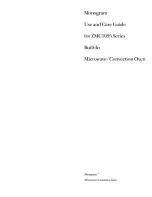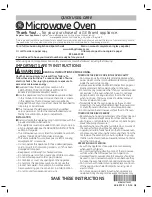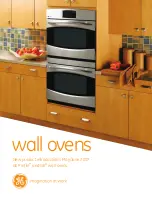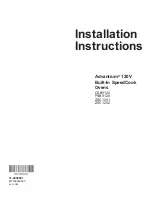
EN / 35
Enamelled surfaces
• After each use, clean the enamel surfaces
using dishwashing detergent, warm water
and a soft cloth or sponge and dry them
with a dry cloth.
• For difficult stains, an oven and grill
cleaner recommended on the website of
your product brand and a non-scratching
scouring pad can be used. Do not use an
external oven cleaner.
• The oven must cool down before cleaning
the cooking area. Cleaning on hot sur-
faces shall create both fire hazard and
damage the enamel surface.
Catalytic surfaces
• The side walls in the cooking area can only
be covered with enamel or catalytic walls.
It varies by model.
• The catalytic walls have a light matte and
porous surface. The catalytic walls of the
oven should not be cleaned.
• Catalytic surfaces absorb oil thanks to its
porous structure and start to shine when
the surface is saturated with oil, in this
case it is recommended to replace the
parts.
Glass surfaces
• When cleaning glass surfaces, do not use
hard metal scrapers and abrasive cleaning
materials. They can damage the glass sur-
face.
• Clean the appliance using dishwashing
detergent, warm water and a microfiber
cloth specific for glass surfaces and dry it
with a dry microfiber cloth.
• If there is residual detergent after cleaning,
wipe it with cold water and dry with a
clean and dry microfiber cloth. Residual
detergent may damage the glass surface
next time.
• Under no circumstances should the dried-
up residue on the glass surface be
cleaned off with serrated knives, wire wool
or similar scratching tools.
• You can remove the calcium stains (yellow
stains) on the glass surface with the com-
mercially available descaling agent, with a
descaling agent such as vinegar or lemon
juice.
• If the surface is heavily soiled, apply the
cleaning agent on the stain with a sponge
and wait a long time for it to work properly.
Then clean the glass surface with a wet
cloth.
• Discolorations and stains on the glass sur-
face are normal and not defects.
Plastic parts and painted surfaces
• Clean plastic parts and painted surfaces
using dishwashing detergent, warm water
and a soft cloth or sponge and dry them
with a dry cloth.
• Do not use hard metal scrapers and ab-
rasive cleaners. They may damage the
surfaces.
• Ensure that the joints of the components
of the product are not left damp and with
detergent. Otherwise, corrosion may occur
on these joints.
7.2 Cleaning Accessories
Do not put the product accessories in a
dishwasher unless otherwise stated in the
user’s manual.
7.3 Cleaning the Control Panel
• When cleaning the panels with knob-con-
trol, wipe the panel and knobs with a
damp soft cloth and dry with a dry cloth.
Do not remove the knobs and gaskets un-
derneath to clean the panel. The control
panel and knobs may be damaged.
• While cleaning the inox panels with knob
control, do not use inox cleaning agents
around the knob. The indicators around
the knob can be erased.
• Clean the touch control panels with a
damp soft cloth and dry with a dry cloth. If
your product has a key lock feature, set
the key lock before performing control
panel cleaning. Otherwise, incorrect de-
tection may occur on the keys.
EN
IT
















































